REVIEW – Benjamin Adams SLP-150 Digital Piano – Semi-Recommended – The Benjamin Adams digital pianos are sold exclusively in the US by Sam Ash Music stores. The Adams brand is a “private label” brand made in China for Sam Ash stores and the Adams digital pianos are typically low price, lower quality entry level digital pianos for basic beginners or for people who don’t know the difference between very low quality digital pianos and a real acoustic piano. The SLP150 (aka: DP1500) digital piano at $579US discount price has been out on the market since late 2017 and is still offered as a low priced product by Sam Ash in their stores and on-line. Although Sam Ash calls this piano a SLP150 in their ads and store marketing materials, nowhere on the piano itself does it say that (SL150). Instead, the piano says DP1500 right on the cabinet so I am not sure why Sam Ash calls the piano something other than what is stamped on the piano itself? That would be like calling a Toyota Corolla “L” a Toyota Corolla “SE” which is a highly upgraded version of the basic Corolla, even though the SE is nowhere on the car. In the product world, the actual product should reflect the actual model number or name on the product. That is a big pet peeve of mine…that a product not be advertised as a different name or model number than what is really is. In my book that is called false marketing/advertising and can lead a shopper to distrust what they are actually buying, regardless of how a person would otherwise feel about that product or price. I would advise any company who has a private label brand to call it by the model number that is on the product itself as that will alleviate any potential problems in the future.
OK…so the SLP-150 does look nice in it’s simulated rosewood cabinet and has a more traditional designed cabinet, utilizes a relatively easy to understand button layout, and kind of sounds like a piano. In fact, the button layout and the amount of features this model appears to have would suggest you’re getting a lot of for a low price. But for just $579US, considering what other (name brand) digital pianos cost with this type of cabinet, the SL150 is very low priced whereas Casio, Yamaha, Roland, and others have their basic traditional furniture cabinet pianos priced at between $1000US to $1100US. So the question is, what is the Adams SLP150 missing that would cause it to sell for so much less money than what the major brands are offering for their entry level traditional furniture cabinet digital pianos? What’s the catch?
As with all pianos whether acoustic or digital, the most important aspects of any piano are key action construction, movement, & response, along with the piano sound chip offering a natural piano tone and then finally the pedaling and how the pedals respond to your foot movement and how the pedals interact with the piano tone and what you are playing on the piano. There’s also the internal sound system and how it projects the piano sound along with the extra digital features. Finally, the brand name of any digital piano does carry some importance because in reality few people in the US have ever heard of the Benjamin Adams private label “house brand,” so in terms of resale value, based on my experience with these things, the Adams brand carries little resale value because few people that I know of care to invest in a brand they have ever heard of and that is not carried outside of a specific store or company. However, almost everyone has heard of Yamaha and Casio as they are sold worldwide through many retail channels, and to a slightly lesser extent Roland, Kawai, and Korg which are all the major digital piano brands out there. All of the major brands normally carry a much higher resale value so keep that in mind when looking at piano brands.
When it comes to key action, piano teachers (like myself) and more advanced piano players consider the key action the most important aspect of any piano. This would also include the construction of the keys, materials used, installation of the key action, the type of electronic key contacts used in the key action, and the weighting of the key action. In the case of the Benjamin Adams SLP150 (aka: DP1500) the key action movement is noticeably light and does not feel like a real piano and in fact the quality of the plastic keys is really no better than the plastic keys you find on cheaper $200-$300 keyboards. The key action does have some weight to they keys but not enough to make it natural like many of the other 88-key digital pianos out there. The key action is also “plasticky” in the way it moves and the looseness of the keys along with the keys being noisy when they go up & down. In fact, if you play on the keys a bit harder when trying to get some musical expression out of the sound, the keys make a thumping sound when they hit the bottom of the keybed underneath the keys which can be distracting, especially when the piano sound is at a lower volume or you’re playing with headphones. Overall the keys rattle when moving so basically the SLP150 has a cheaply made key action that would be OK for a beginner player but that beginner/student would soon outgrow this key action if they keep progressing in their skills because the SLP150 key action won’t allow good key response with proper key graded weight like a piano should otherwise have.
The electronics under the keys which are commonly referred to as “key contacts,” and normally are made from rubber which is what triggers the sound when the keys go down. The key contacts are very important and unfortunately they seem to be cheaply made in my opinion because the piano sound does not always respond correctly to the key pressure when playing the keys. In other words I found the key contacts which trigger the piano sound not responding to my touch accurately like they would in a better digital piano with better key contacts. Also, the touch weight of the keys is too light as I previously mentioned and the key action quality does not come anywhere close to other digital pianos in the $500 – $700 price range that I have played. So, unfortunately if you don’t play piano and not sure whether the key action is good or not in a digital piano you are looking at, that’s a problem because you don’t want to buy a piano purely on price or looks. The digital piano needs to play correctly and sound good or you’ll be doing yourself and/or your family members a disservice in the long-run. Again, this key action is OK in the beginning, but if you get past that then you may be sorry you did not spend a bit more money for something that will last you many more years because it will allow you to play the music you love in a way that is more expressive and much more natural.
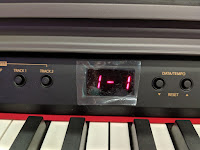 As for the piano sound itself, that part of this model is also cheaply produced. The piano sound is recorded from a real piano by a process called sampling. But not all sampling methods are the same nor are the pianos the sound is taken from and in fact many sampling techniques vary in some big ways. The more computer memory that is used to record the piano sound from a real piano (using specialty microphones) the better the piano sound will be along with the type of sampling process and microphones that are used. Also, another thing that is very important is the length of the piano sound recording during the sampling process and also if it is done for each key. In the SLP150 (aka:DP1500) the piano sample is cheaply done and it is easy to tell by listening to it and noticing many artificial piano sound anomalies. Also, the sample in the SLP150 is not done on every note individually like some higher priced digital pianos, but it is done on one note of the original piano sound and then electronically stretched and tuned to the next notes in groups which saves a lot of money for the manufacturer but it can produce very artificial piano tones, particularly in these cheaper Chinese off-brands. It’s not what you see in the piano but it’s what’s inside that matters and the piano sound chip on the inside produces a very low quality unrealistic piano tone because of the very low quality sampling process. However, as I have said before, if you are a beginner you may not notice these things and be OK with it at first. But as you progress in your playing or if you already know how to play piano, you will probably wish you had purchased something else for a bit more money.
As for the piano sound itself, that part of this model is also cheaply produced. The piano sound is recorded from a real piano by a process called sampling. But not all sampling methods are the same nor are the pianos the sound is taken from and in fact many sampling techniques vary in some big ways. The more computer memory that is used to record the piano sound from a real piano (using specialty microphones) the better the piano sound will be along with the type of sampling process and microphones that are used. Also, another thing that is very important is the length of the piano sound recording during the sampling process and also if it is done for each key. In the SLP150 (aka:DP1500) the piano sample is cheaply done and it is easy to tell by listening to it and noticing many artificial piano sound anomalies. Also, the sample in the SLP150 is not done on every note individually like some higher priced digital pianos, but it is done on one note of the original piano sound and then electronically stretched and tuned to the next notes in groups which saves a lot of money for the manufacturer but it can produce very artificial piano tones, particularly in these cheaper Chinese off-brands. It’s not what you see in the piano but it’s what’s inside that matters and the piano sound chip on the inside produces a very low quality unrealistic piano tone because of the very low quality sampling process. However, as I have said before, if you are a beginner you may not notice these things and be OK with it at first. But as you progress in your playing or if you already know how to play piano, you will probably wish you had purchased something else for a bit more money.
 A piano sound “sample” is a slice of the actual piano sound from a real piano and then that slice is looped so that when you play a key, the piano sound you hear is not a full length natural sound like a real piano has, but it is a small sample of the sound that plays over and over in a loop. The longer and smoother the loop (when the piano sound begins and then fades out and ends), the more natural that sampled sound will be. In the SLP150 the looped sound is only about 1 second long. In other words, every second you will hear the sampled loop start over and the result in the sound is an annoying looping cycle of that original piano sound piano sound going around and around where you can actually hear the loop start over every second. Because of that short loop of sound, the piano sound itself is very artificial especially when that piano tone is sustained when holding the sustain pedal down or holding the key down for a few seconds or more. It’s almost like the piano sounds like a wah-wah sound being heard over and over every second. In the beginning a beginner student may not notice this artificial piano sound in this piano, especially if they play choppy staccato style. But as a person progresses in their skills or if you already play piano, then you will notice this anomaly in the piano sound and there’s no way to change it. It’s there because this Chinese piano manufacturer is using a very cheap process to get the piano sound and then put it into the digital piano chip…hence one of the reasons for a lower cost digital piano. If you want a natural, beautiful piano sound out of the instrument you buy and you know what a piano really sounds like, then this piano will not do that based on the technology they use.
A piano sound “sample” is a slice of the actual piano sound from a real piano and then that slice is looped so that when you play a key, the piano sound you hear is not a full length natural sound like a real piano has, but it is a small sample of the sound that plays over and over in a loop. The longer and smoother the loop (when the piano sound begins and then fades out and ends), the more natural that sampled sound will be. In the SLP150 the looped sound is only about 1 second long. In other words, every second you will hear the sampled loop start over and the result in the sound is an annoying looping cycle of that original piano sound piano sound going around and around where you can actually hear the loop start over every second. Because of that short loop of sound, the piano sound itself is very artificial especially when that piano tone is sustained when holding the sustain pedal down or holding the key down for a few seconds or more. It’s almost like the piano sounds like a wah-wah sound being heard over and over every second. In the beginning a beginner student may not notice this artificial piano sound in this piano, especially if they play choppy staccato style. But as a person progresses in their skills or if you already play piano, then you will notice this anomaly in the piano sound and there’s no way to change it. It’s there because this Chinese piano manufacturer is using a very cheap process to get the piano sound and then put it into the digital piano chip…hence one of the reasons for a lower cost digital piano. If you want a natural, beautiful piano sound out of the instrument you buy and you know what a piano really sounds like, then this piano will not do that based on the technology they use.
Otherwise the piano sound itself (without consideration of the looping process) is fine for beginners with the exception of the middle octaves where most people play. Some of the notes in the middle octaves sound very mellow with little expression and tonal changes coming from those notes. But other notes in the middle octaves are brighter with more expression, so overall the piano
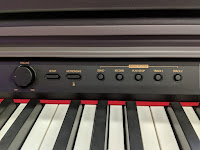
sound is somewhat random in the tone and expressiveness (mellow or bright) and that is not the way a real piano behaves. The tonal quality and character should be the same on all notes and not different from one note to the next. Again, that’s a sign of poor sampling and poor key electronics. If you don’t play well then you may not notice these things but after awhile you probably will and then it’s too late and there’s no way to change this. You do get what you pay for…especially in this “no-name brand” Benjamin Adams because that name is just made up and there is no actual Benjamin Adams factory or design team. It’s just a created name to give you the impression that because of the American nature of the name itself, then the piano must come from the US…which is definitely does not. Beware of names that you don’t know or have not heard of because they may or may not be good digital pianos. Guitar Center store also has their own private label brand called “Williams.” I have done reviews of those digital pianos and generally do not recommend them as they are even lower quality than the Benjamin Adams brand in my opinion. I do know of some brands that people have not heard of that are excellent digital pianos and rival just about anything that the name brands are making. So just because you have not heard of the brand does not automatically make it bad…but you just need to be careful.
The pedaling on the SL150 does have 3 pedals although the main damper/sustain pedal does not have the half-damper effect which would simulate how a real piano sustain pedal behaves in offering different sustain times depending on how far you move the pedal down with your foot. The SLP150 sustain pedal is just on or off, no in-between sustain times. The amount of sustain time, otherwise known as decay time, is pretty good overall but when you hold down the right sustain pedal for very long then you hear the very short and unnatural sampled looping piano sound that I mentioned earlier. But again, as a beginner this may not matter until you start to develop your playing skills and then it will matter. That’s what a digital piano shopper needs to consider; do they want to buy a nice looking piano that has a cheap and artificial piano playing experience or is the goal to get the best piano playing experience you can get in your budget range? That’s an important question that you will need to decide upon.
The SLP150 (aka: DP1500) has 18 instrument tones including strings, electric piano, organ, choir, etc, along with a split keyboard function, digital MIDI recorder which is nice to have to record your practice songs, transpose function, key touch velocity setting, twin piano mode, reverb, and 2-part layer recording parts which is very nice. The piano also supports MIDI/USB connectivity with external devices, along with stereo headphone jacks to plug in headphones for private practice. The non-piano instrument sounds are just OK with a few being better than others. But the reason most people buy these lower priced digital pianos is for the primary purpose of playing or learning to play the piano. All the extra “bells & whistles” that a digital piano can otherwise have will never be a good substitute for a lack of piano playing realism. So while this piano cabinet may be somewhat attractive in its more traditional furniture cabinet appearance with its imitation matte black finish along with built-in sliding key cover, you should not judge this piano by its looks but rather by its ability to play and sound like a piano and be something that you and/or your family can grow into rather than grow out of.
For the lower price of just $579US, this piano is as good as it gets in this price range for a more traditional looking furniture cabinet appearance out of any of the available brands. So if you can put up with the playability deficiencies of this model that I have previously discussed, then go ahead and buy it. But just know that if you go beyond that of a beginner player or student, you may likely not be happy with the key action, piano sound, and pedaling as you progress in your playing skills. If you already know how to play piano then my recommendation is that you save your money and get something worth owning for the long term rather than the short term…you will be glad you did. Oh, and if this piano should ever need parts and service then “good luck” because normally for no-name (private label) brands, getting service and parts can be very difficult based on my experience over the years and the warranty time is rather small. Before you purchase any digital piano anywhere please do your homework & research and contact me. You’ll be glad you did!
If you want more info on new digital pianos and LOWER PRICES than internet discounts, please email me at tim@azpianowholesale.com or call direct at 602-571-1864.
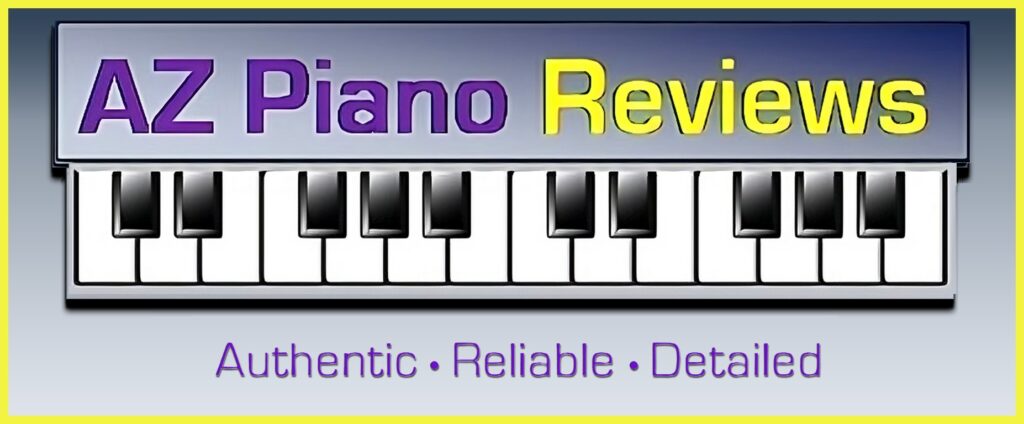





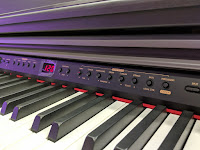


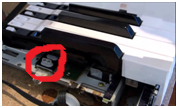

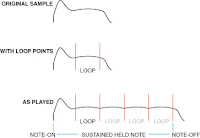



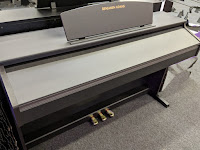



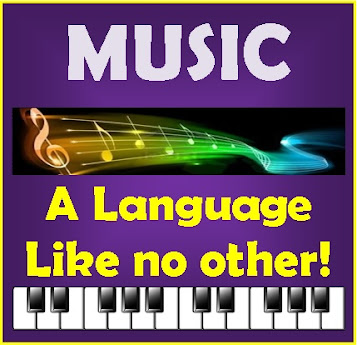

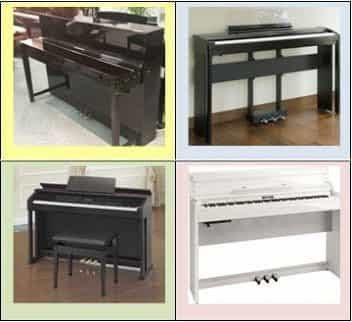
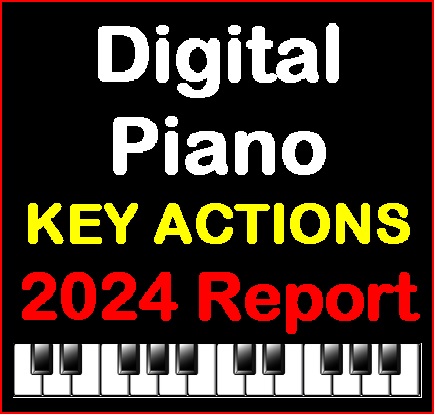
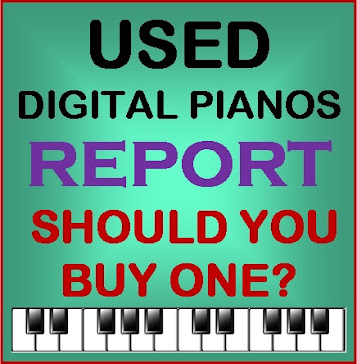
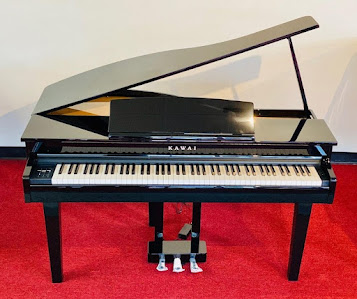
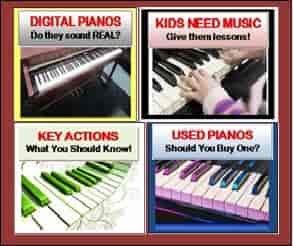
Hello, I bought a Benjamin Adams SLP150 Digital Piano and I dont know how to record ? can you explain me please?